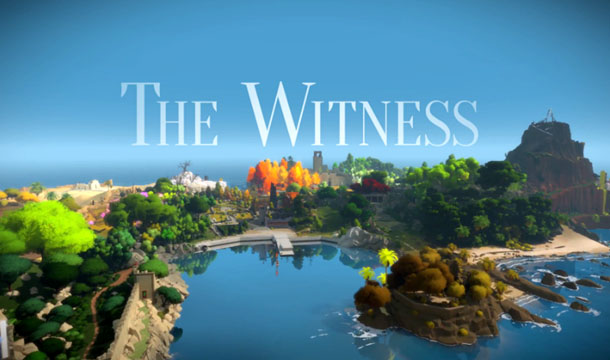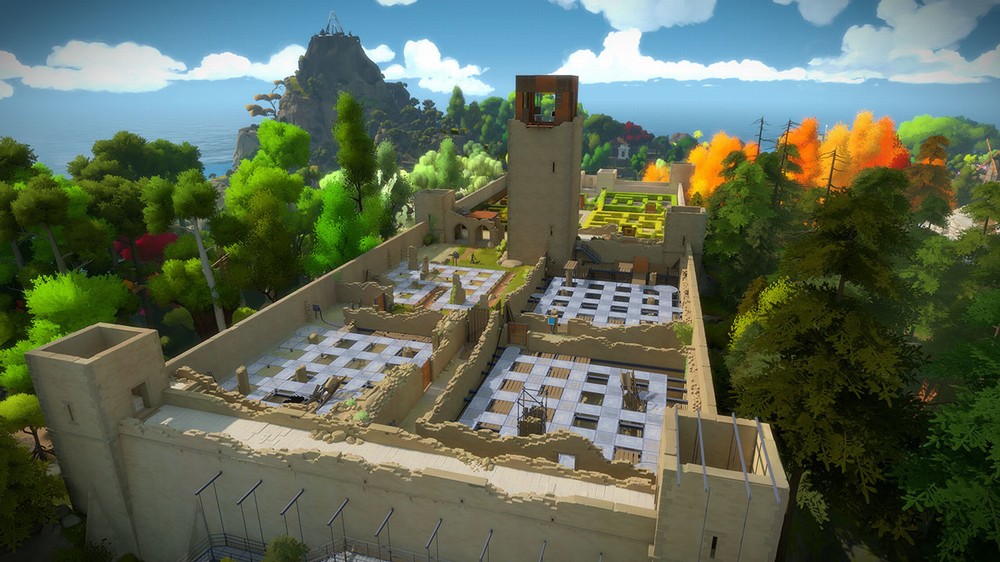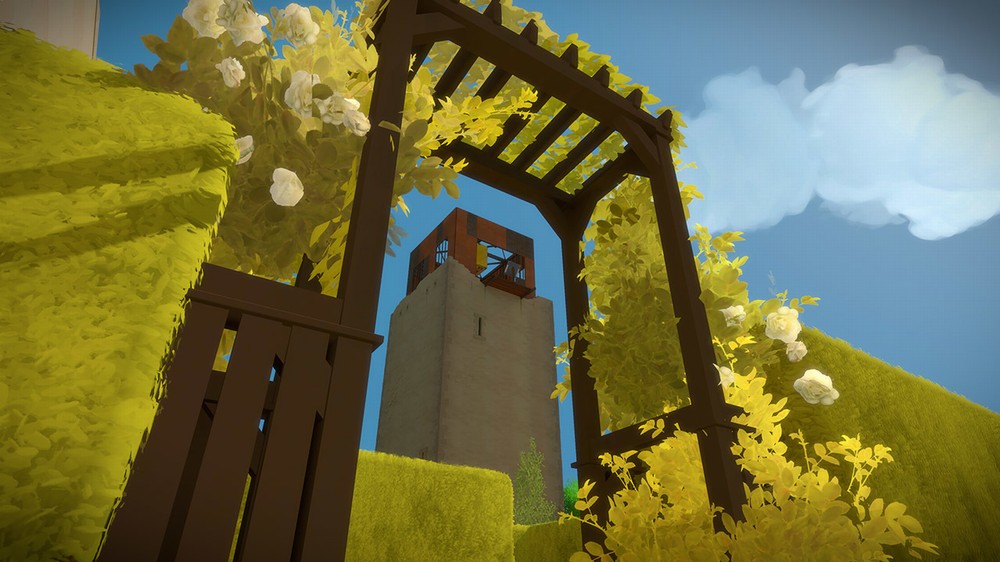Jonathan Blow is one of the more enigmatic videogame developers of the present day, one who seems to take true delight in presenting his vision of a game to the public and asking them to interpret what it is supposed to be without any indication of theme or meaning. Blow, along with his team at Tekla, Inc., has recently released The Witness, a puzzle game in development for a number of years, and one, which has been much talked about by both the videogame press and players. In The Witness, players find themselves on a mysterious, deserted island, and by solving a myriad of puzzles it is hoped that some reason of where they are and why will be discovered.
Starting in a darkened tunnel, players are faced with a number of doors that can be opened by solving some fairly simple line-drawing puzzles. Past these doors lies a courtyard containing yet more puzzles, and beyond this lay access to the entire island. This is practically the only point in the game where you are given explicit indication on where to go next, as the remainder of The Witness is spent exploring the island at your leisure, solving puzzles as you see fit.
As you wander, you’ll discover groups of screens, which will usually only have one screen illuminated. Solving the puzzle on this screen will brighten the next in a particular sequence, and following this trail, along with series of wires which also light up after the completion of a sequence, will lead you on a trail through a themed section of The Witness’ island.
Each section is themed in both locale and puzzle type, with environments ranging from castle keeps and villages to desert excavations, jungle canopies and quarries, and puzzle types varying through subjects such as symmetry, color separation or tone recognition. As sections are completed, a laser activates, which shines towards the top of a mountain. This is revealed to be your ultimate goal, but to access it, you are required to complete the majority of the puzzles on the island, a task that seems initially simple, but in truth proves quite daunting.
Puzzles evolve throughout the course of the game, both as part of an individual section and as part of the game as a whole. Initial puzzles within a section serve as tutorials to how this particular set of puzzles work, and it’s quite astounding how the game manages to teach you how to solve each variation of puzzle without ever explicitly telling you how to do so. Instead, you work through a series of progressively harder challenges, some of which begin to integrate environmental clues or distractions, but all of which require you to draw the correct line from point A to point B.
There’s an astonishing variation of puzzles to overcome in The Witness, particularly as they all follow the same basic set-up. You’ll be tracing mazes, drawing trees, copying sound waves and creating shapes, but all of it is line-based, and almost all of it feels distinct from puzzles that you’ve attempted or solved already. Later sections require players to bring together the knowledge that they’ve acquired from previous areas on the island and to use them in conjunction with other skills to solve puzzles, and towards the end of the game you’ll be calling on almost everything that you’ve learned to beat some of the tougher challenges.
The Witness is confident in itself, in the fact that it doesn’t offer up any form of solace for players struggling with some of its tougher puzzles. There’s no hint system, not much chance to skip puzzles, and some of the later challenges are almost obnoxiously difficult. This is the first game for a while where I’ve had to have a notebook handy at all times, and there were multiple occasions where I became so frustrated at a puzzle that I had to put the controller down and go for a walk to clear my head. This isn’t so much of a ‘sit down and relax’ puzzler as an ‘I could spend a whole evening on a single puzzle and still not solve it’ type game.
That’s not to say that there isn’t the basis within the game to solve almost every puzzle, however. Often, when I was stuck in a puzzle, it was because I hadn’t visited another area of the island that taught you how to overcome a particular problem, I wasn’t paying enough attention to the environment to see what it was trying to tell me, or I hadn’t quite fully understood the theme of the puzzles was trying to solve, and I had to go back a few steps to reevaluate what the puzzle was asking me to do. Though The Witness can feel unfair at times, it very rarely (if ever) is, and it will often be a fault or oversight on your end that is causing you to be unable to beat a certain puzzle at a particular point in time. What’s more, if you ever feel like you’re running into a brick wall, there’s never a point in the game where you’re not free to back out and wander to another part of the island to attempt a different type of puzzle.
The Witness is one of those rare games that frustrates me to no end, but one that I find incredibly difficult to put down. I’ve never really got into the Dark Souls series, but I can imagine that this is how advocates of those games feel too. The puzzles are so well designed, and the island that they are on is so captivating that I can’t help but be in awe of the work that Jonathan Blow and Tekla, Inc. have done on this game. The Witness is easily one of the best puzzle games made to this point, and I would wholeheartedly recommend it to anyone with even a passing interest in testing their brain in videogame format. It’s not a title for the mentally faint-of-heart, but if you’re willing to take on the challenge, you’ll be well rewarded.





















